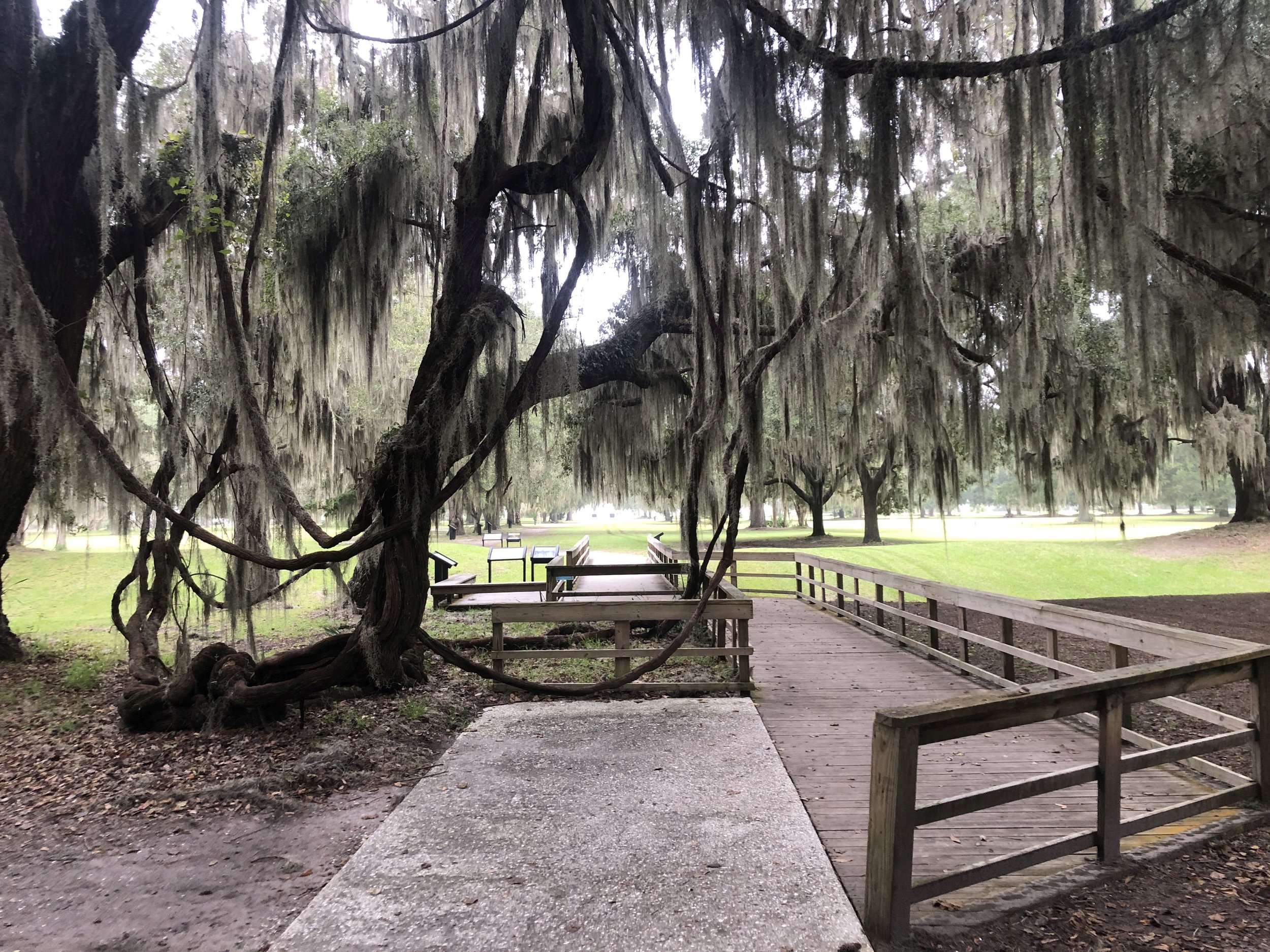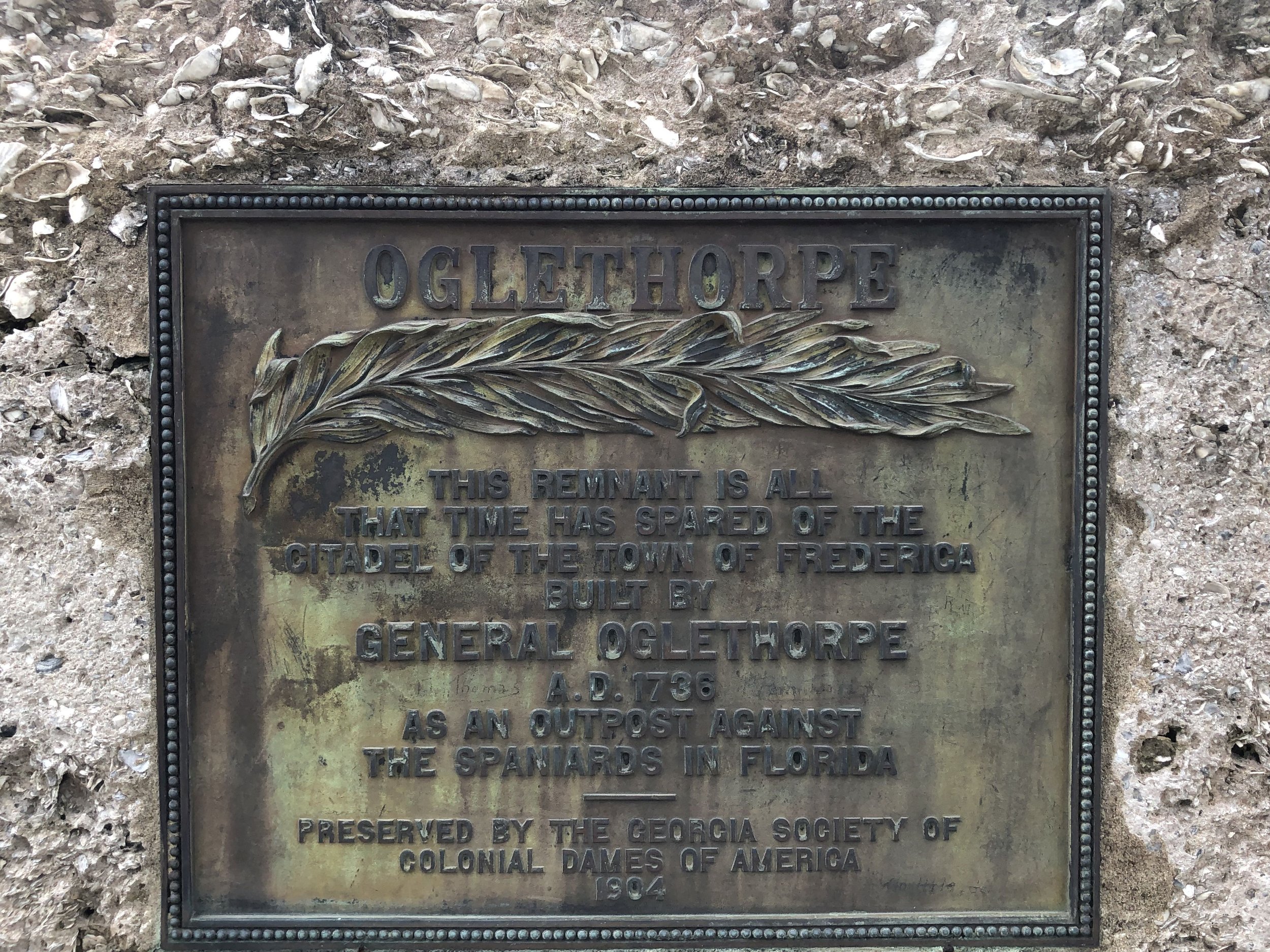Fort Frederica
A wedding on Kathy’s side of the family gave me the opportunity to visit Fort Frederica on the finest of all of Georgia’s barrier islands, St. Simons Island. But before we get to the fort, an observation on this recently attended, modern wedding.
As best I can recall, I have attended five weddings in the last 20 years, two in the last 10. (This does not count my own wedding.) All have been the union of two young people, meaning people in their twenties and thirties, and most of the guests were young people. This last wedding was the union of two young people, and most of the guests were young people, but it had a different feel. The young ladies who were not the bride (maids of honor and fair maidens not in the wedding party) were dressed to the nines at both the rehearsal dinner and the ceremony itself. Barely dressed to the nines would be a more accurate description. I found myself marveling at the dresses slit up to the pelvis, the mini-mini dresses, the bare midriffs, the barely concealed breasts, and the stiletto heels. Kathy tells me that all these dresses were quite expensive. While several of these lovelies were single, even the accompanied ladies were dressed for the hunt. I throw this out as an observation and pass no judgment on their attire. I simply note that it is something different. It could be a good thing or a bad thing, or nothing at all. Given that I am male and not yet dead, I am inclined to think it a good thing. You are welcome to your own opinion. At any rate, I enjoyed the show immensely.
Where was I? Ah, yes, Fort Frederica.
Initially, I was confused by the name. There is a Fort Frederick, or the remains of a Fort Frederick, in Beaufort, SC. (A part of the fort is now under the Beaufort River, and what remains on land is fenced off, inaccessible to the general public. Presumably, when the archaeologists are finished with their work, this example of tabby construction will be open to the general public, if any of it remains.) The name sounds German, as indeed it is. Frederick, Prince of Wales, was the oldest son of King George II. He grew up in Hanover, now a part of Germany, and was removed to England in his early twenties, when his father became king. Unfortunately, he did not live long enough to become a British king. His brother became King George III, of American Revolution fame. Frederica is the feminine form of the name, but I was not aware of a daughter of King George II named Frederica. The name question was answered by an employee at the site. To avoid confusion with Fort Frederick, Oglethorpe gave the fort the feminized name.
The two forts are intertwined in my thinking, aside from being named for the same person. When he came to the New World to found the colony of Georgia, James Oglethorpe landed in Beaufort at Fort Frederick. After recovering from the trans-Atlantic ordeal, Oglethorpe left Beaufort, and established the city of Savannah. When Oglethorpe later built Fort Frederica on St. Simons Island, it became the southernmost British fort, taking the title from Fort Frederick. The fort was finished around 1742, some 11 years after the completion of Fort Frederick. While Fort Frederick guarded the city of Beaufort from the depredations of the Spanish in Florida, Fort Frederica guarded the town of (drum roll, please) Frederica, which grew up in the shadow of the fort. (By the way, the Fort is located on the Frederica River. Frederick, Prince of Wales, probably wins the award for having the most places named after a person who never really accomplished his life’s goal.)
The fort served its purpose well. Shortly after work on the fort was completed, Oglethorpe and his soldiers successfully defended the town twice from Spanish invaders. Unfortunately, his successes removed the threat from the Spanish, which made the fort expendable. The fort was no longer garrisoned after 1749; by 1755, the town of Frederica was almost a ghost town. By the time of the American Revolution, the town was in ruins.
The fort and town were designated a National Monument in 1936, which marked the beginning of salvage and restoration work. While the archaeologists have done a tremendous amount of work there, uncovering building foundations, artifacts, and the like, I saw tents covering excavation sites, so work there is not finished. Still, it was an interesting and informative visit. Best of all, it was free of charge.
I am posting some of the photos I took below. They do not do justice to the site, so the best thing for you to do is to go see it for yourself.
The view from the entrance to the site.
On Broad Street in Frederica, facing the river and the remains of the fort.
All that is left of the tabby fort is this structure.
The plaque on the fort.
Another view of the fort.
This is all that is left of the barracks.
The foundation of the candlemaker’s home and shop.
The tavern keeper and the doctor lived in an early version of a duplex.
This is what remains of the earthen wall that surrounded the town of Frederica.
The old burial ground was located outside the earthen walls surrounding the town. The names of those buried here are lost to time.










